A Blue and Bubbly Bit of Nostalgia: the American Girl Illuma-Room, and how The Groovy Room would look IRL today.
Styling a real life version of the 2000-2003 AG Mini*s Illuma-Room, thanks to 1stDibs.
❥This email may be truncated in your inbox. To make sure you are reading the entire post, please move yourself along to a web browser!
I’m about to appear a little psychotic here, but it’s for a good and fun reason, I swear.
Do you remember the American Girl AG Mini*s series of magnetic, mix-and-match Illuma-Rooms? They were white-boxed rooms at around 12x12x12” that allowed your preteen self to arrange miniature furnishings and wallpapers. The light fixtures had tiny cords with impossibly small plugs for placing delicately into the floor’s outlets, which meant that the boxes were actually illuminated. Magnetized, electrified, and modular! American Girl released these rooms in 2000 and eventually stopped production three years later. Your allowance money could buy one for $48.
I remember my Illuma-Room feeling like an exorbitant luxury—and nothing like a dollhouse.
There were a dozen or so different room themes to choose from, but in my eyes, only one mattered: the blue groovy room. And zedis lapedis was it good! Holy moly, I think about this specific piece of my childhood more than I reasonably should. When doing so, I can’t help but wonder: is this tiny room toy responsible for me being the archivist for a mid-century modern furniture legacy brand?! Is it why I love Eames and Girard and retro futuristic architecture and design with a soul-reaching frenzy? Is this my reason for wanting to own an orange Futuro House, or at minimum, to visit every single one on the planet? It had to have undoubtedly fueled my childhood loft-living-in-New-York-City ambition, which I was lucky enough to achieve in real life 12 years later. There are so many connections between the room I staged as a ten-year-old and the way my life has materialized. I can almost feel my head spinning.
In an Architectural Digest article, Sydney Gore wrote, “the AG Mini*s allowed me to escape into a world of my own creation where I could envision a room occupied by my cool future self.” The article is fascinating, as it touched on philosophical, political, and aesthetic styles and cultures. At one point, it turned more serious, mentioning the view of New York outside some of the rooms’ windows—the scene depicted the New York skyline with the Twin Towers intact. After 9/11, preteens with this Illuma-Room were faced with a visual reminder of an event that they may or may not have understood the nuances of.
Pilar Drickson Garrett, now an architeture historian, reelected on her Illuma-Room in the time just after 9/11:
“This very real world event entered into my personal imagined space of this world that I was involved in, interacting with, and creating for myself. And then this incredibly political element coming into it being like, ‘This feels important, I shouldn’t not take this seriously, and I should remove the view that has the Twin Towers.’ It felt so far away—it was this thing that was just an idea of an event that my parents had explained to me—but it didn't hit me in any kind of direct or personal way until it entered into my own world via AG Mini*s.’”
I was ecstatic to read Sydney’s own connections to these rooms. It’s identical to my own experience of Illuma-Room and how it enforced small-me’s ideas of my future dream life:
“It wasn’t until I was interviewing with Amy Astley for my current job at Architectural Digest in 2021 that it occurred to me how heavily I was influenced by this tiny part of the American Girl universe. AG Mini*s sparked my interest in design and planted the seeds for a passion that I had never subconsciously considered pursuing a path toward. It gave me a sense of control over the material world, and without this line I probably wouldn’t have known how to design with a point of view—or have developed my own sense of style, taste, and identity. I used to spend hours curating these rooms and fantasizing about living in a loft apartment on top of a diner someday. Fast-forward 20-something years later and I’m a journalist living in a one-bedroom apartment in New York City, getting paid to write about interiors and how real people live. The thread of how and where it all began is so clear to me now, but it didn’t register until I was asked to connect the dots.”
We’re clearly two peas in an early-2000s-American-Girl-cubed pod.
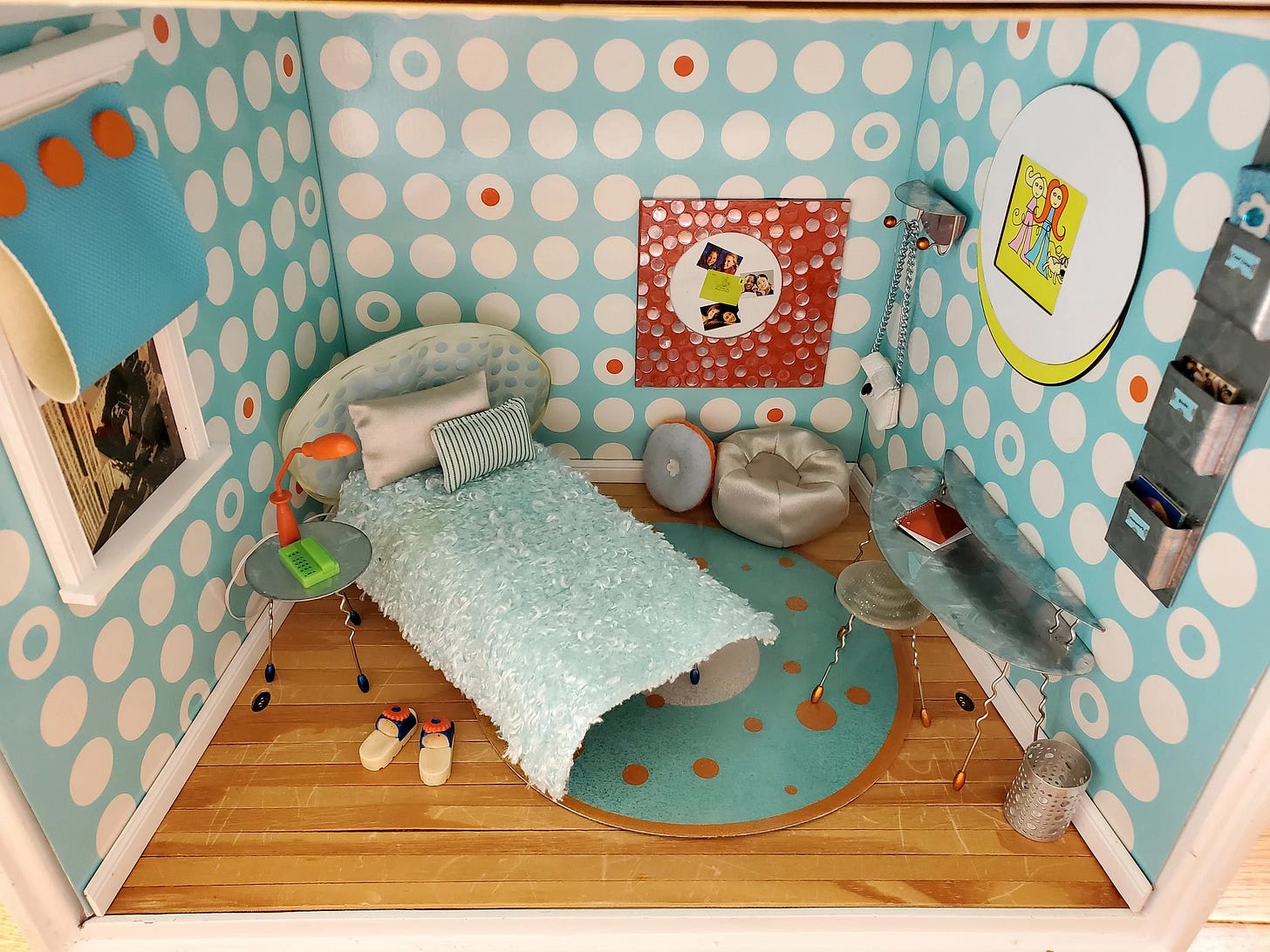
How my 2024 Illuma-Room would look now, if it was life-sized and I were rich, rich, rich:
I searched the wildly opulent world of 1stDibs for vintage pieces that were as close as humanly possible to the original Illuma-Room’s contents. Honestly, I’d happily exist in this room forever, with bonus points if NYC’s skyline was just outside my window! Every single item was truthfully pulled from 1stDibs, including the wallpaper, flooring, books, and photographs. Even the lemon placed in front of the waste basket—although I’m not sure the seller would include that in the sale.
What a blast!!!!
The cost for all items in my 1stDibs Groovy Room (without shipping) is: $146,772. I’d say it’s a little more steep than a 2000’s $48.



Selects from *The Groovy Room*
Italian Mid-Century 'Arte Povera' Artist Wire Sculpture Chandelier, $19,870
1960s Silkscreened Panel by Peter Gee, which I used as wallpaper, $32,000 per panel
Art and the Machine book by Sheldon and Martha Cheney, 1st edition from 1936, $850
Osvaldo Borsani Brass Bed, $18,634
Space Age Mod White Fiberglass Ball Chair in the style of Luciano Frigerio, $2,876
Christian Dior Modernist Chrome and Brass Picture Frame with Brigitte Bardot photographs, 1970s, $600
Vintage Charles and Ray Eames Cherry Red Hang-it-All Wall Rack, $975
1970s Iconic Modernist Silver Plated Italian Basket by Lino Sabattini, $719
Alexander Girard for Braniff Airlines Hexagon Side Table, $4,197
1930s Art Deco Dressing Table with Round Mirror and Chair by Danish Cabinetmaker, $3,875
Moooi Small Ripples Rug in Silver with Wool by Andrés Reisinger, $4,212
Here’s the full collection of objects I gathered, including some extras that didn’t make the cut. I found a rug, for example, that fit the vibe of the original room so much, but it was jarring in the new room—and I couldn’t take the royal blue coloring seriously!
And for easier comparison:
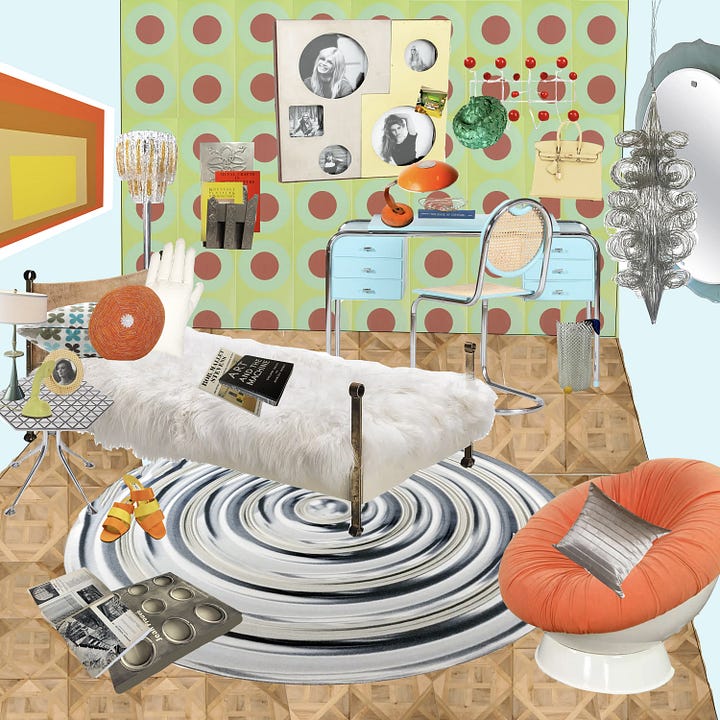
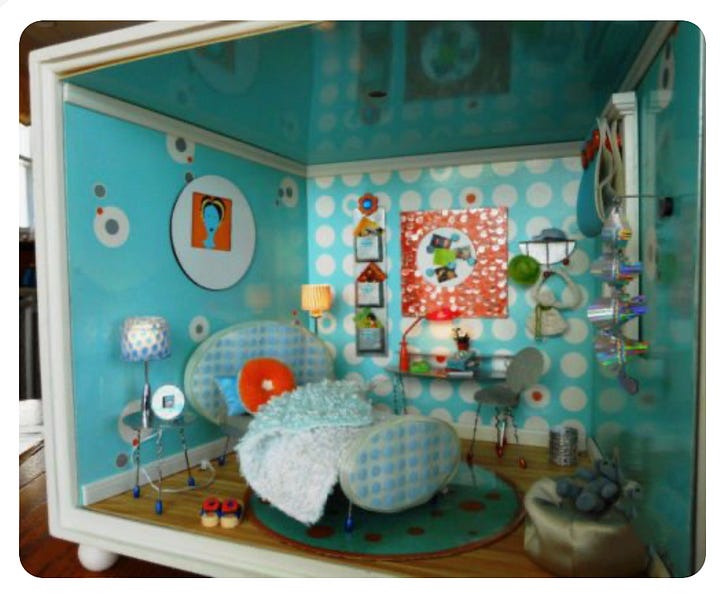
Related Notes:
Let’s pretend-huddle around my imaginary space-aged bedroom and talk about design and art together. My Illuma-Room BOOK CLUB features these titles: Architectural Digest Winter 1967; The Book of Costume by Davenport and Crown; Metal Crafts in Architecture by Gerald Geerlings; Nouveaux Plaisirs d’Architectures by Le Centre Pompidou; Jean Prouvé by Galeries Jousse Seguin; Robert Mallet Stevens: Architecture, Furniture, Interior Design by Pinchon; Art and the Machine by Sheldon and Martha Cheney. Side note: I wrote a BOOK CLUB post about a Sheldon Cheney book already, so this is a truly perfect intersection.
The Vitra Schaudepot has recently switched up its exhibition space, allowing for futuristic furnishings to make their way to the gallery. Science Fiction Design
From Space Age to Metaverse is running through May 2025. I can’t rave enough about how much I admire Vitra—and I am very belated on writing about my trip there in April. One corner is looking particularly GROOVY BLUE ROOM, isn’t it?
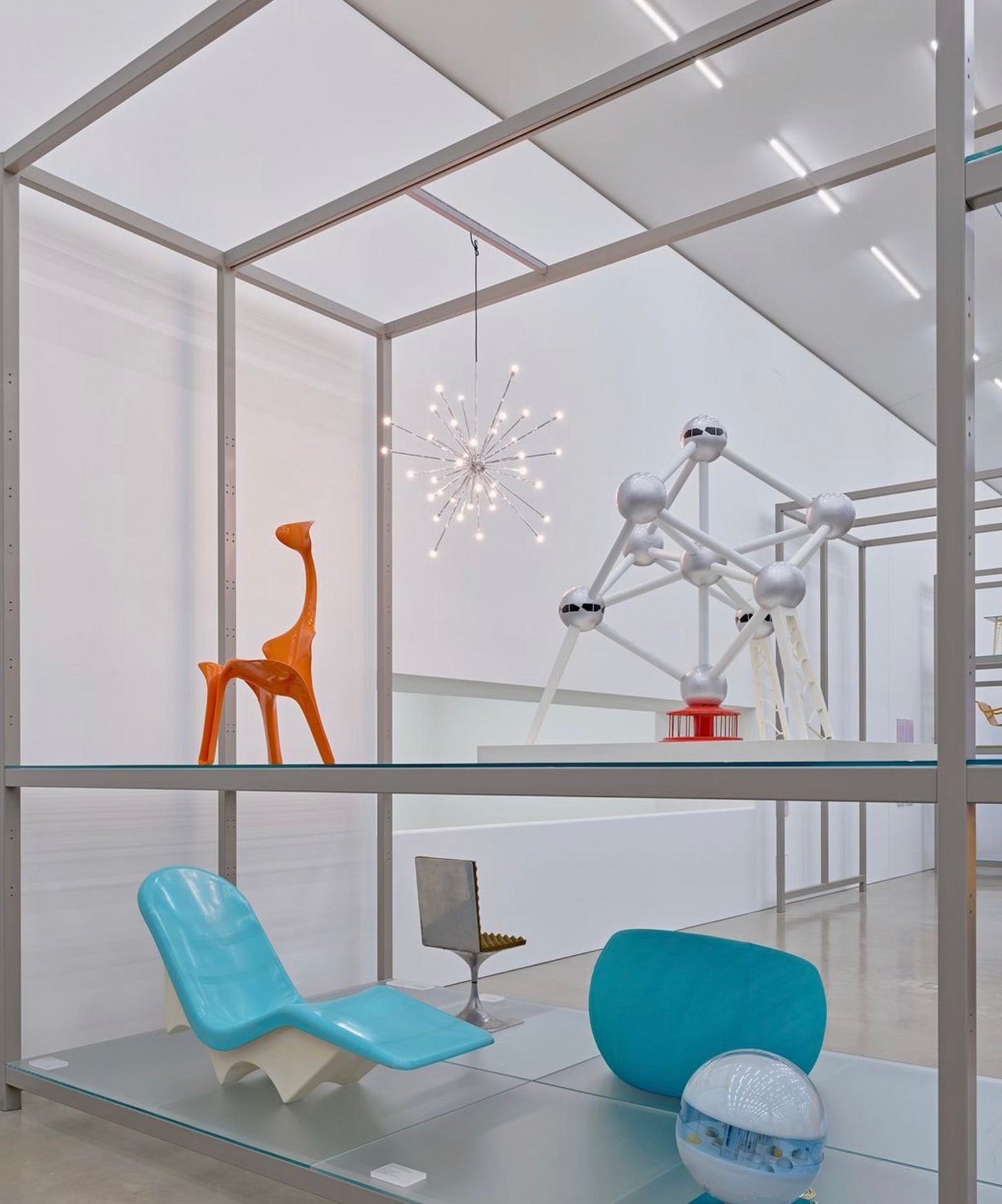
I stumbled upon this Prefab Nova House that’s also for sale on 1stDibs ($470,877):
The product description is great.
Designed in 1972 by architects Michel Hudrisier and M. Roma for Studio Rochel, the Nova House came to fulfill the fantasy of those dreaming of living in space. While that type of architecture was in vogue at the time, it was mostly applied to resort architecture, where vacationers were offered an experience that took them outside the known world, and into the extraordinary. Its seductive and glamorous appearance corresponded with the futuristic architecture formulated in the late 60s by Archigram, a British avant-garde architectural group, which created architecture with a strong commitment to high tech, space capsules, and mass-consumer imagery. It was the time of Buckminster Fuller, Pompidou Centre, and the Japanese Metabolism Movements, and architects sought to merge architecture, science, and fantasy.
Honorary mention for this mirror that I found during my 1stDibs extravaganza, which kind of reminds me of a more stunning version of THE chip ‘n’ dip from Mad Men. If you know, you know.
Speaking of miniature rooms, I admired some wonderful ones at Le Musée de l’Orangerie in Paris this spring:
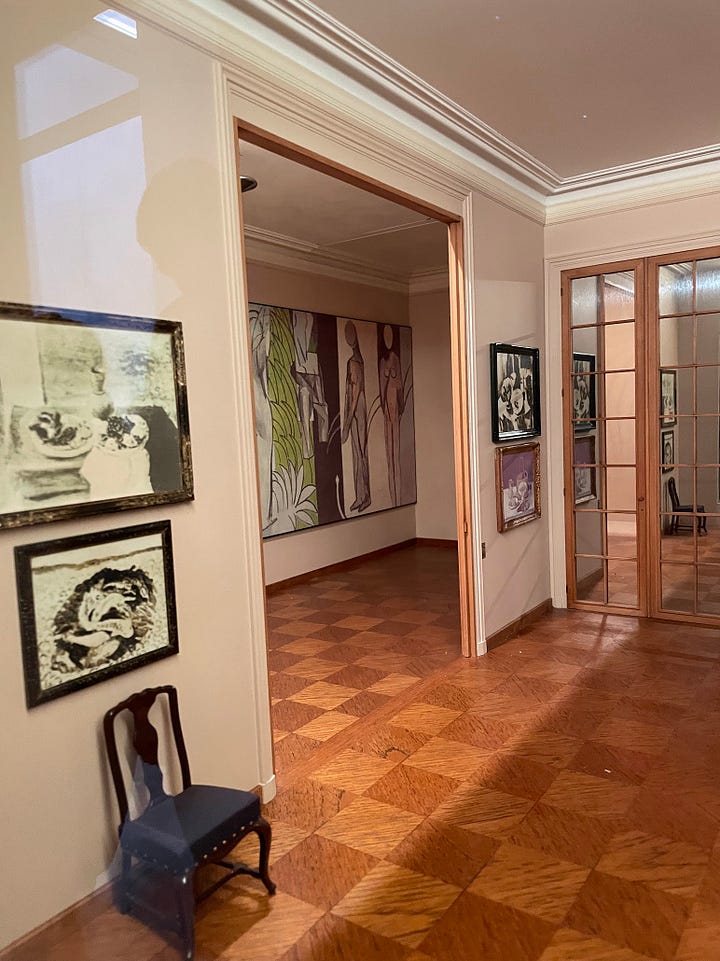
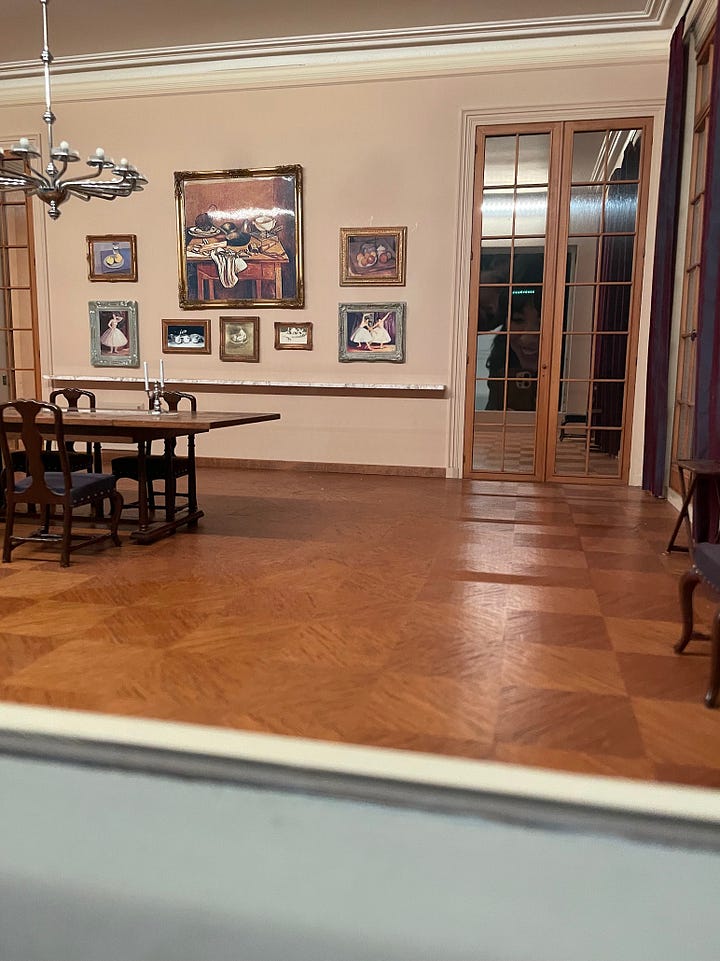
If you like interior design that is quite the opposite of the groovy room, you may be interested in the homes of artist Cy Twombly, which I wrote about in an earlier Absolument post.
**
May you be blessed by the spirit of groove and polka dots,
Kelsey Rose





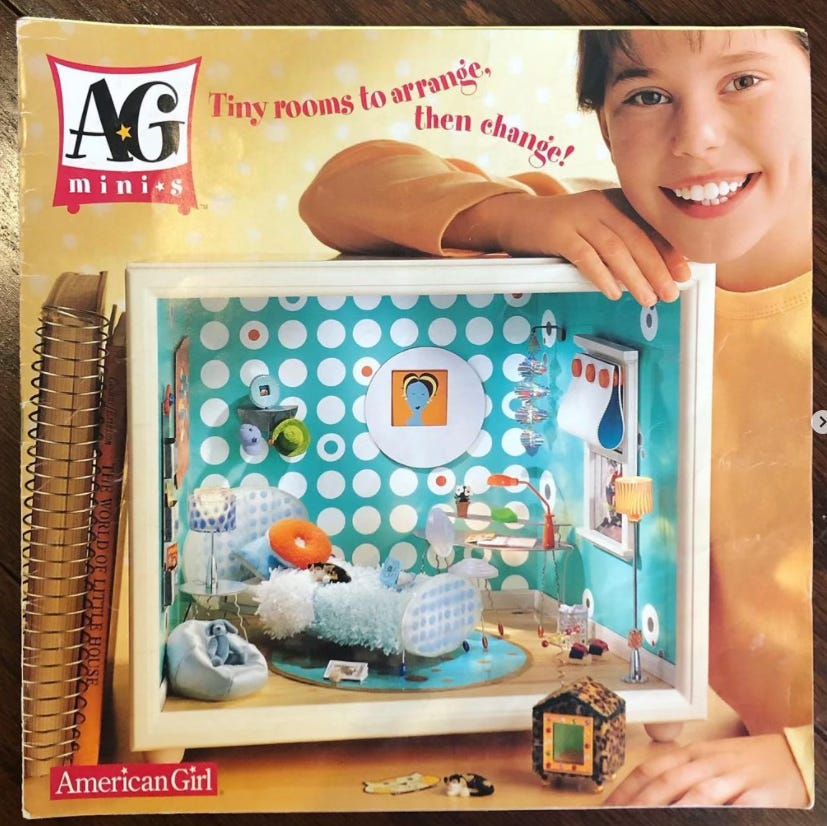
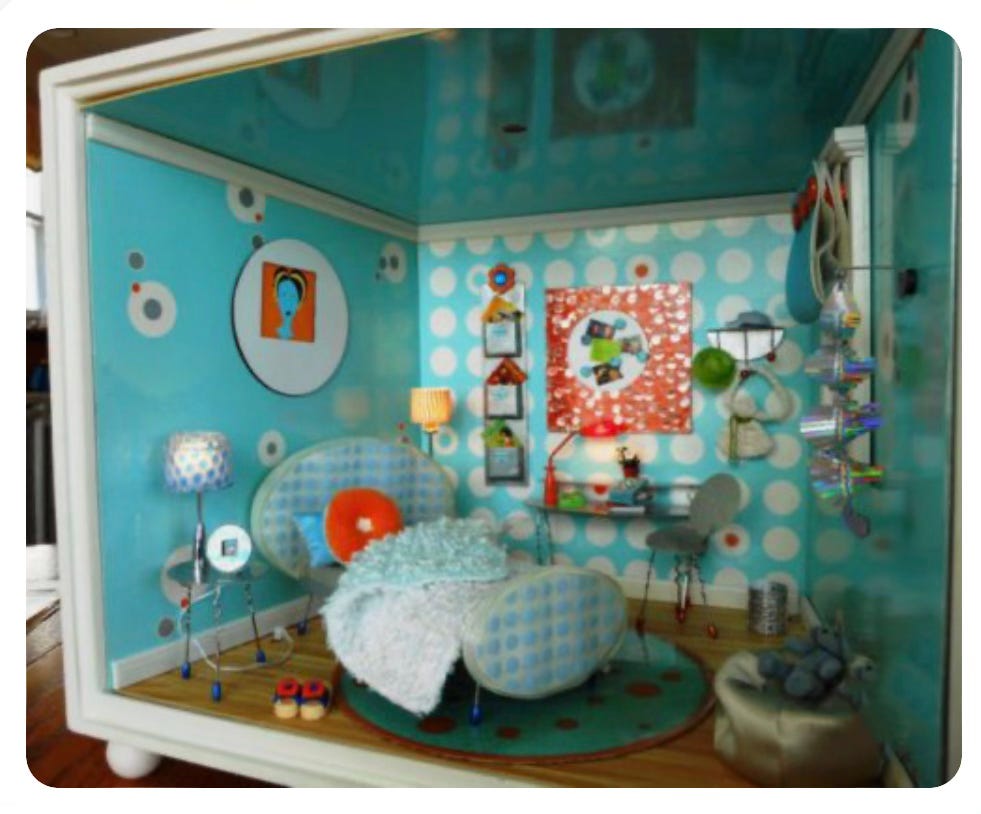

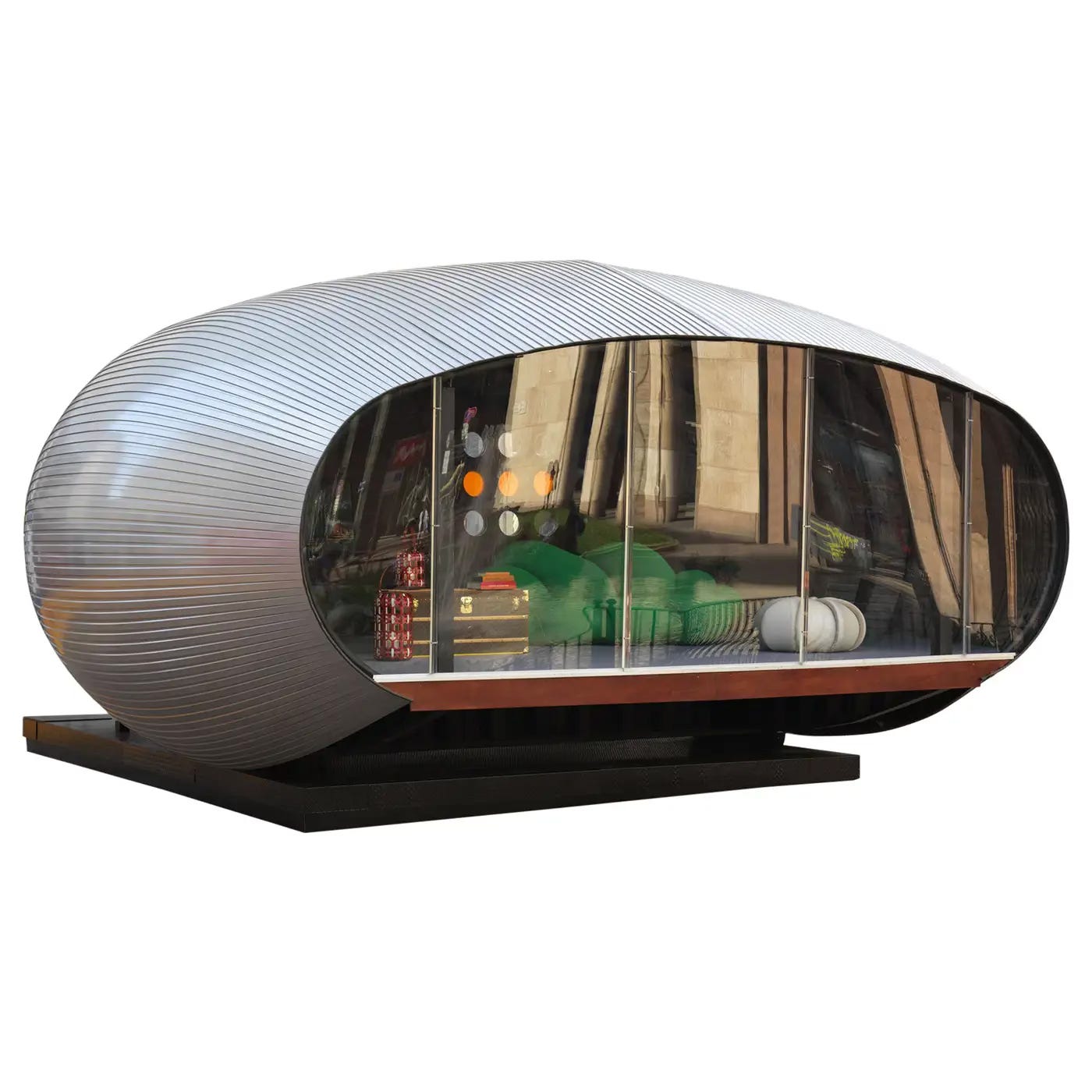
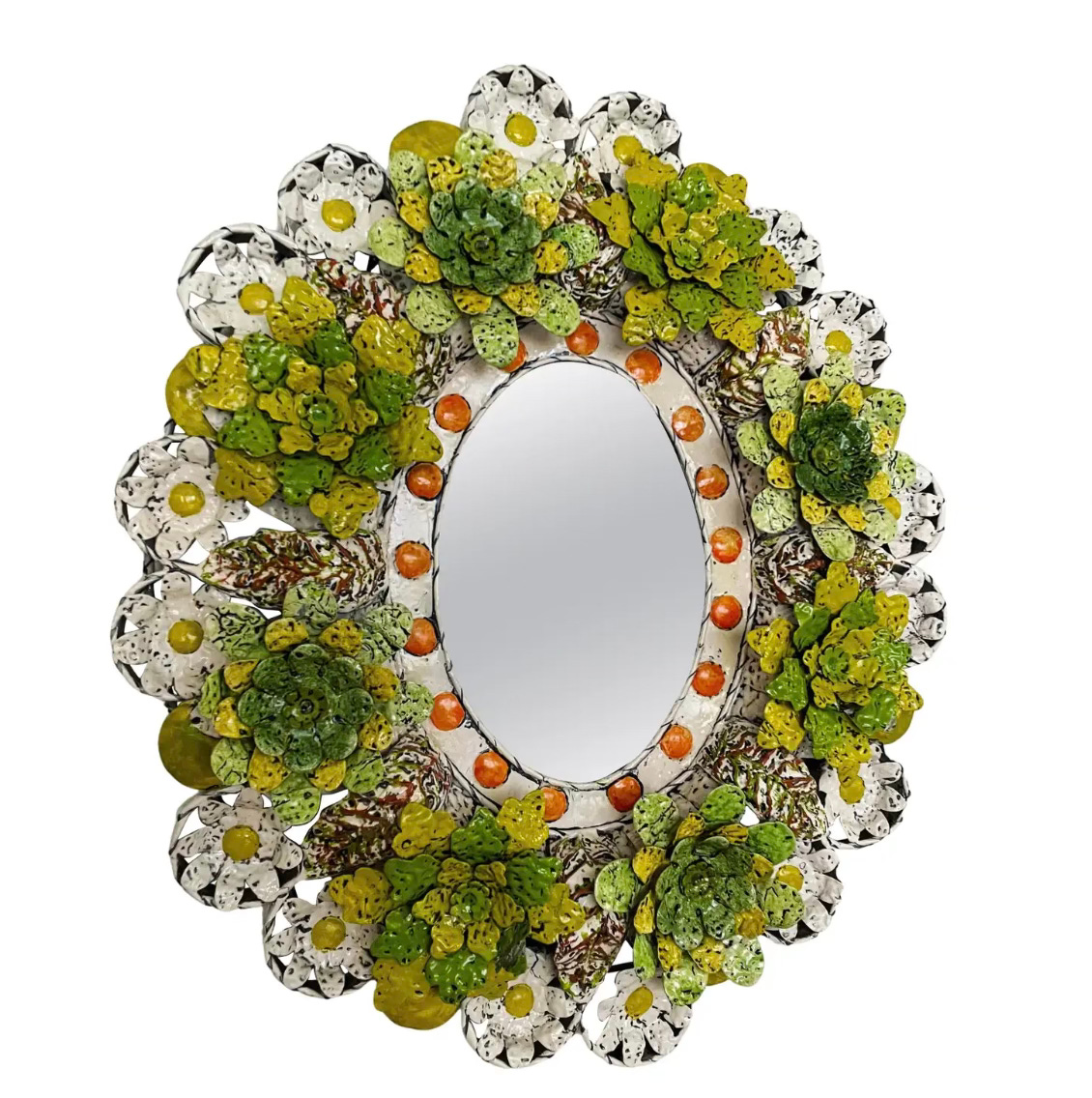
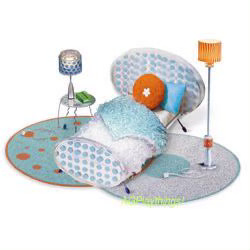
absolutely love this post! if you ever make it to chicago (coincidentally american girl HQ) the thorne miniature rooms in the basement of the art institute are wonderful.
Thank you for this heavy heavy dose of nostalgia!!! I didn’t have one but my best friends older sister did and I would allllways ogle it!